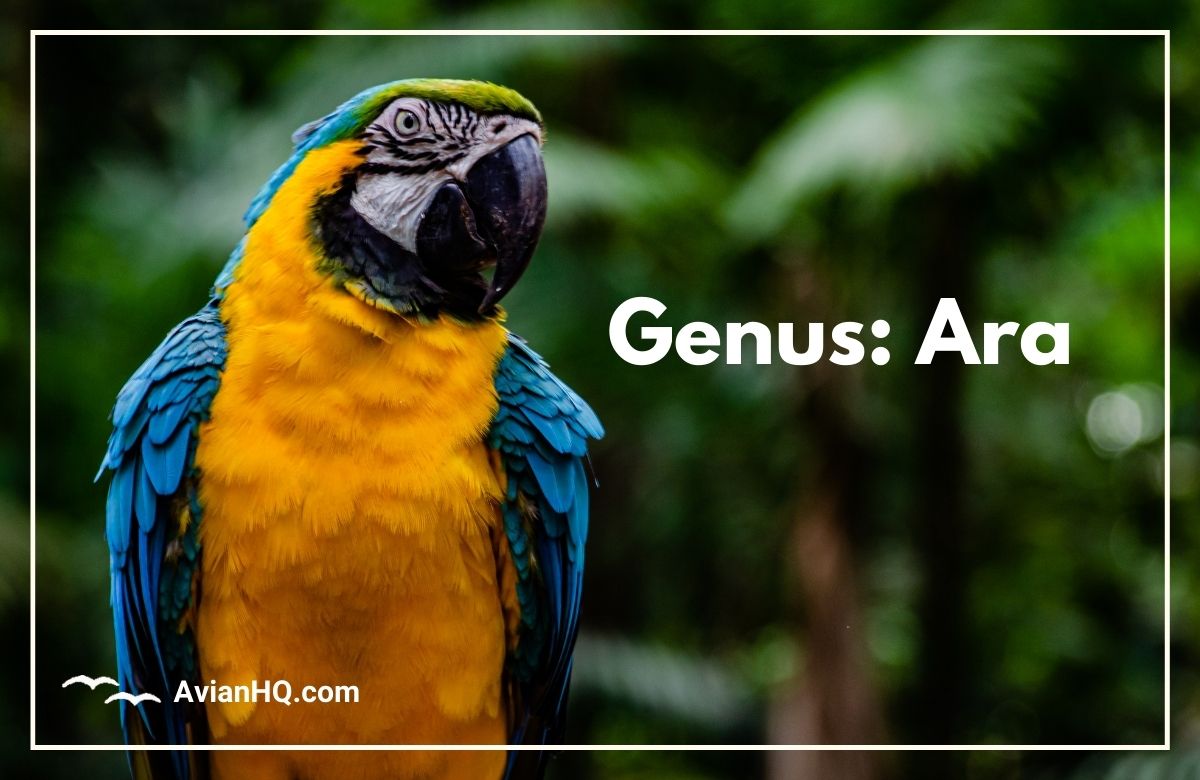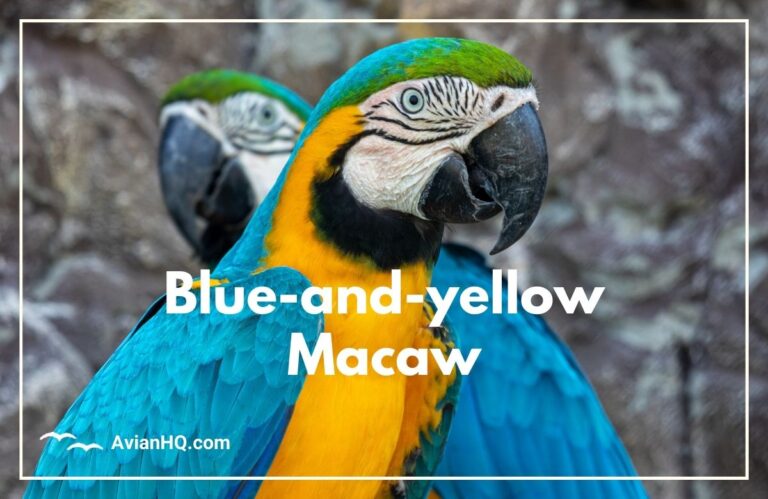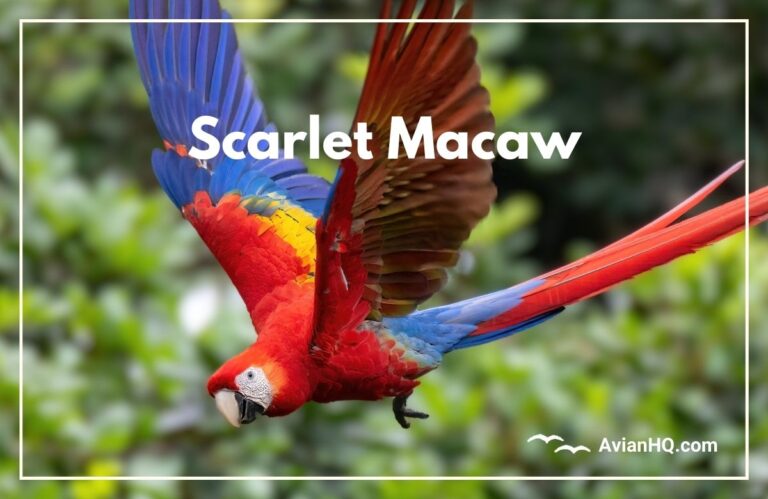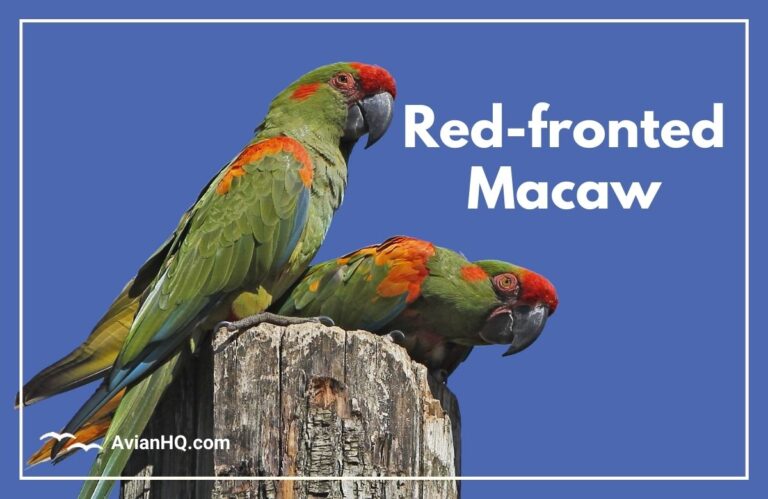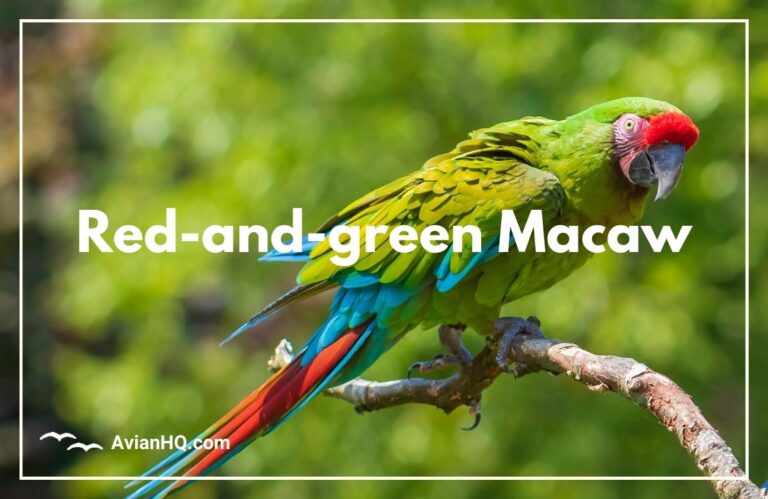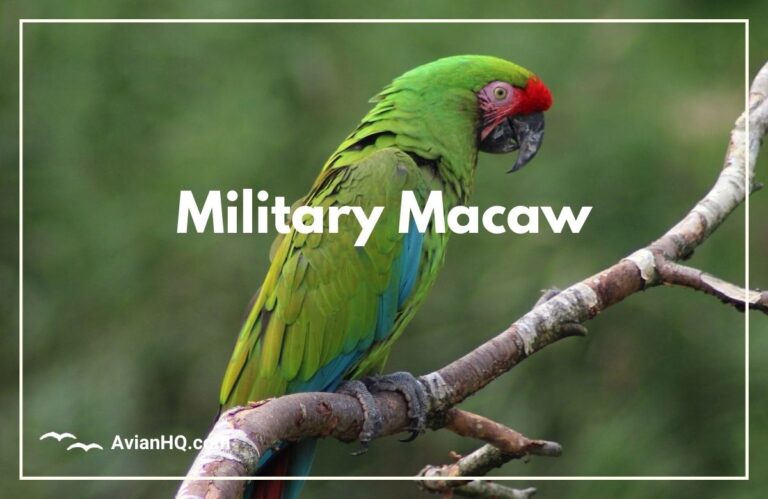Genus: Ara
Have you ever admired the vibrant plumage and boisterous squawks of exotic macaws? If so, you’ve likely encountered a member of the spectacular Ara genus. Known for their dazzling hues and charismatic nature, Ara macaws showcase captivating diversity across Central and South America.
This blog invites you on an exploration of a Neotropical marvel – a journey through the wonders of Ara. Here you’ll encounter eight species still gracing our earth, two tragically vanished species, and intrigues around a third known only from traces in history’s annals.
“Ara macaws represent an iconic, imperiled group of Neotropical birds. Stunning beauty combined with social bonds and intelligence – traits underscoring the urgency for their conservation.”
As we delve into the uniqueness of each Ara persona and the threats they face, a unifying theme resonates – the need to safeguard their future. Through this blog, may your glimpses into their world kindle an abiding appreciation of their exceptional qualities.
- Key Features
- Distinctive bare facial patches
- Long, tapered wings enabling extensive flights
- Vibrant, multi-hued plumage in dazzling combinations
- Species Diversity
- 8 extant species
- 2 extinct modern species
- 1 extinct historical species
- Threats
- Deforestation
- Poaching for pet trade
- Conservation Needs
- Habitat protection
- Community support
Species Spotlights
Dive into the diversity of Ara macaws by glimpsing key features of each species:
| Macaw Species | Colorful Plumage | Habitat | Conservation Status |
|---|---|---|---|
| Great Green Macaw (Ara ambiguus) | Stunning green feathers and a red forehead | Tropical rainforests of Central and South America | Endangered |
| Blue-and-yellow Macaw (Ara ararauna) | Striking blue and yellow plumage | Various parts of South America | Least Concern |
| Red-and-green Macaw (Ara chloropterus) | Vibrant red and green feathers | Forests of Central and South America | Least Concern |
| Blue-throated Macaw (Ara glaucogularis) | Distinct blue throat and vibrant green body | Small region of Bolivia | Critically Endangered |
| Scarlet Macaw (Ara macao) | Bright red, yellow, and blue feathers | Tropical rainforests of Central and South America | Least Concern |
| Military Macaw (Ara militaris) | Green feathers resembling military uniforms | Mexico and Central America | Least Concern |
| Red-fronted Macaw (Ara rubrogenys) | Red forehead and blue wings | Small area of Bolivia | Critically Endangered |
| Chestnut-fronted Macaw (Ara severus) | Chestnut-colored forehead and green body with blue wing feathers | South America | Least Concern |
Great Green Macaw (Ara ambiguus)
Also called buffon’s macaw, this species bears the distinction of largest size within the Ara genus. Their imposing frame extends up to 100 cm (39 inches) long. Splendid green hues saturate their plumage, with scarlet, royal blue and deep violet ornamenting wings and tail.
Native Range: Costa Rica and Panama
Conservation Status: Endangered
Blue-and-Yellow Macaw (Ara ararauna)
Familiar flashes of sapphire, citrine and emerald characterize this species. Playful spirits with expressive vocalizations have fueled their popularity as pets. They inhabit a vast stretch spanning Panama to southeast Brazil and northern Argentina.
Native Range: Wide distribution across northern South America
Conservation Status: Least Concern
Red-and-Green Macaw (Ara chloropterus)
With nominate red plumage contrasting with green wings, this species resides in the rainforest canopies of South America’s western tier. They occur in eastern Peru, Brazil and Bolivia. Slightly smaller than other Ara macaws, this group reaches around 76 cm (30 inches).
Native Range: Eastern Peru, Brazil and Bolivia
Conservation Status: Least Concern
Blue-Throated Macaw (Ara glaucogularis)
The beguiling “beard” of vivid cobalt feathers defines this aptly named macaw. Among the rarest of all macaws, less than 250 individuals remain due to poaching and habitat loss. They inhabit savannah “islands” amid swamplands of northeast Bolivia. A petite frame for an Ara macaw reaching just over 60 cm (24 inches) in length.
Native Range: Northern Bolivia
Conservation Status: Critically Endangered
Scarlet Macaw (Ara macao)
Perhaps the most recognizable parrot on Earth, scarlet macaws wear their namesake with pride. Crimson pairs with blue and gold in a sartorial sensation spanning Mexico to the Amazon Basin. With a wingspan over a 1 meter (3 feet), they’re well equipped for explorations across this expansive range.
Native Range: Mexico, Central and South America
Conservation Status: Least Concern
Military Macaw (Ara militaris)
Commanding and adaptable, this macaw thrives in diverse habitats throughout their wide domain, which extends from Mexico to Argentina. Renowned for raucous vocalizations and elliptical acrobatics accentuating their emerald plumage and scarlet foreheads. They measure around 75 cm (30 inches).
Native Range: Mexico to Argentina
Conservation Status: Least Concern
Red-Fronted Macaw (Ara rubrogenys)
Scarlet patches ornament their foreheads, lending them their name. Green with teal wing flights and red markings, these macaws inhabit arid inter-Andean valleys of Bolivia. Highly endangered, with roughly 1,000-4,000 remaining. They reach just under 60 cm (24 inches) in length.
Native Range: Valleys of south-central Bolivia
Conservation Status: Endangered
Chestnut-Fronted Macaw (Ara severus)
Sharing the rainforests of the Amazon Basin, this petite macaw species sports primarily green plumage with grey ceres and a scarlet patch on its chin resulting in its name. Reaching just 46 cm (18 inches) in length, they are the smallest extant Ara macaws. Their curved bill suits their seed-heavy diet in their tropical abodes extending across northeastern South America into Brazil’s interior.
Native Range: Amazon Basin of South America
Conservation Status: Least Concern
Behavior and Intelligence
Ara macaws lead vibrant social lives within flocks of varying sizes. Younger groups trend towards greater activity and cacophonous vocal exchanges. Quieter conversations transpire amid paired birds.
Collective behaviors serve critical functions. Flocks take synchronized flight when threats loom, their simultaneous ascent and screams of alarms disorienting predators.
Pairs preen each other frequently, fortifying lifelong bonds. Clowning around through play fighting and tossing items strengthens relationships among flock mates.
Food sharing also occurs among pairs and within flocks. These behaviors point to ara macaws’ high intelligence and emotional capacity.
This cognitive prowess facilitates mimicking speech and other sounds. With proper training, some have compiled vocabularies exceeding 100 words. Their smarts also enable complex problem solving.
Match their wits and revel in their charming antics should you have the privilege of their company. But first ensure any captive prospect you encounter was ethically acquired.
With average lifespans exceeding 30 years, extensive commitments are intrinsic to properly caring for these extraordinary birds. Meeting their advanced needs requires ample research and resources.
Cultural Significance
To indigenous cultures, Ara macaws signified nobility and power. Brilliant plumes ornamented ceremonial dress across Mesoamerica and in the Andes.
In indigenous cultures, the symbolism of Ara parrots goes beyond their physical appearance. These majestic birds are revered for their vibrant plumage, which is often associated with abundance and vitality. Their striking colors reflect the harmony and diversity of the natural world.
Legends linked scarlet macaws to fire and sunlight in Zapotec mythology. Aztecs associated red and green macaws with fertility. And for Amazon peoples like the Matsigenka, exchanging macaw feathers sealed a tribal truce.
Today Ara macaws remain cultural emblems of the vivid biodiversity gracing Latin America’s forests and grasslands. As flagship conservation species, they attract ecotourists hoping to glimpse their radiance amid threatened habitats stretching from Mexico to Argentina.
Responsible and regulated observation practices provide vital economic incentives for preserving critical breeding areas and roosting sites across their ranges. But excessive intrusions risk destabilizing groups and detrimentally impacting breeding success. Finding the appropriate balance allows their dazzling hues to continue captivating imaginations while supporting local communities.
Threats and Conservation
Myriad perils confront Ara macaws, ranging from extensive habitat destruction to poaching for the pet trade. Over the past two decades, 50-65% of Neotropical parrot species have declined.
For the Ara genus specifically, agricultural expansion and logging ravage crucial breeding and roosting resources. Capture for the pet trade also remains an urgent concern, illegally smuggling between 10,000-20,000 macaws annually.
Conservation statuses reflect these mounting pressures:
- 2 species classified as critically endangered
- 4 designated as endangered
- 2 labeled vulnerable
Safeguarding remaining populations demands concerted action across stakeholders:
Governments must expand protected areas and implement policies combatting illegal trade. Scientists require funding for comprehensive population surveys and breeding programs. And local communities play integral roles through habitat restoration and monitoring initiatives.
Finally, the culinary acclaim macaws hold in some regions needs replacement with sustainable alternatives to alleviate poaching pressures.
Through coordinated efforts across sectors, the dazzling richness Ara macaws bring to Neotropical skies can persist for generations to come. But action must progress rapidly before shrinking genetic diversity accumulates irreparable wounds.
Conclusion
We’ve explored the wonders of Ara macaws – their spectacular beauty, boisterous flocks, devoted bonds and the threats jeopardizing their future.
From great green giants to tiny red-fronted companions, Ara macaws showcase the most vivid palette in all the parrot families.
We’ve witnessed their significance as cultural symbols and conservation flagships across Latin America’s diverse landscapes, from arid valleys to rainforest canopies.
Now is the time to act, to ensure captive breeding programs thrive and anti-poaching initiatives spread – before population sinkholes accumulate irreparable harm.
Responsible ecotourism, sustainable agriculture and community support offer pathways for preservation. There exist optimistic horizons where Ara macaws continue brightening skies and spirits for eons to come through collaborative action.
Their exceptional nature deserves nothing less than our full commitment to safeguard their survival. The vibrant glory Ara macaws bring into the world is worth protecting at all costs.

